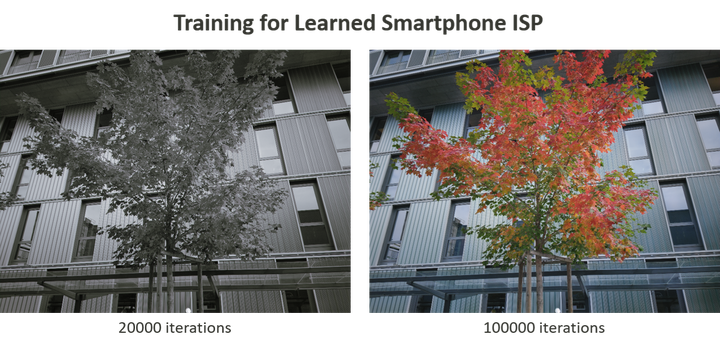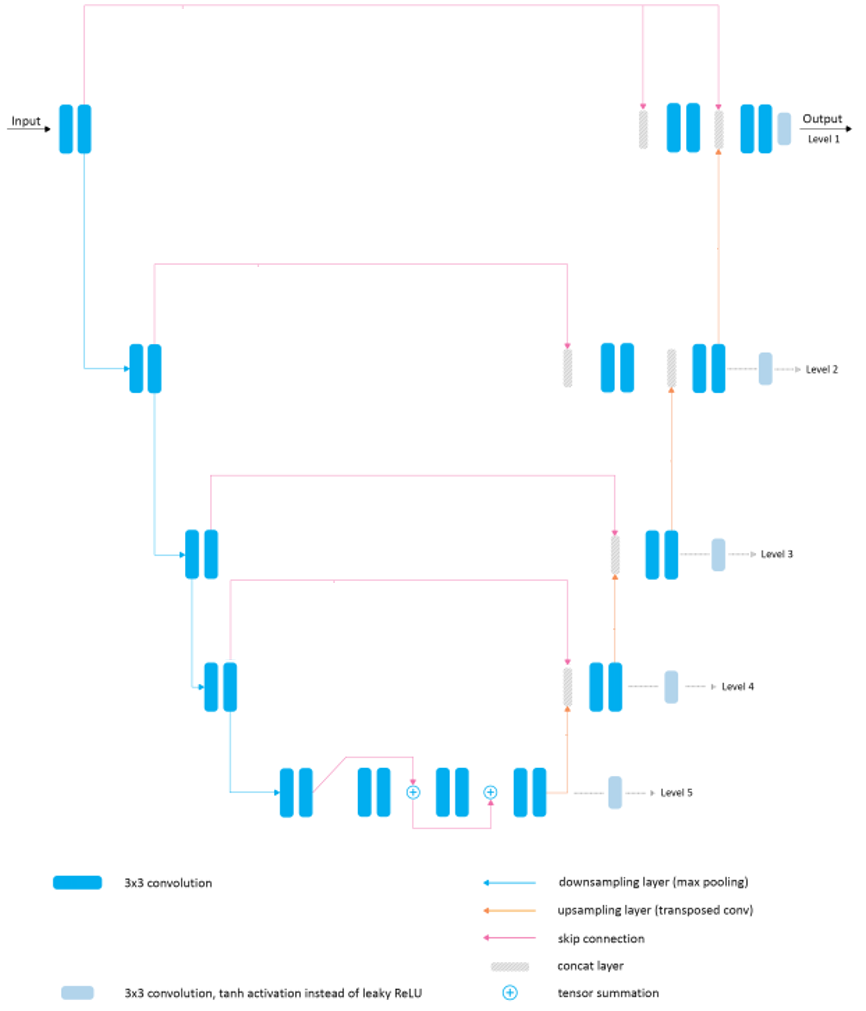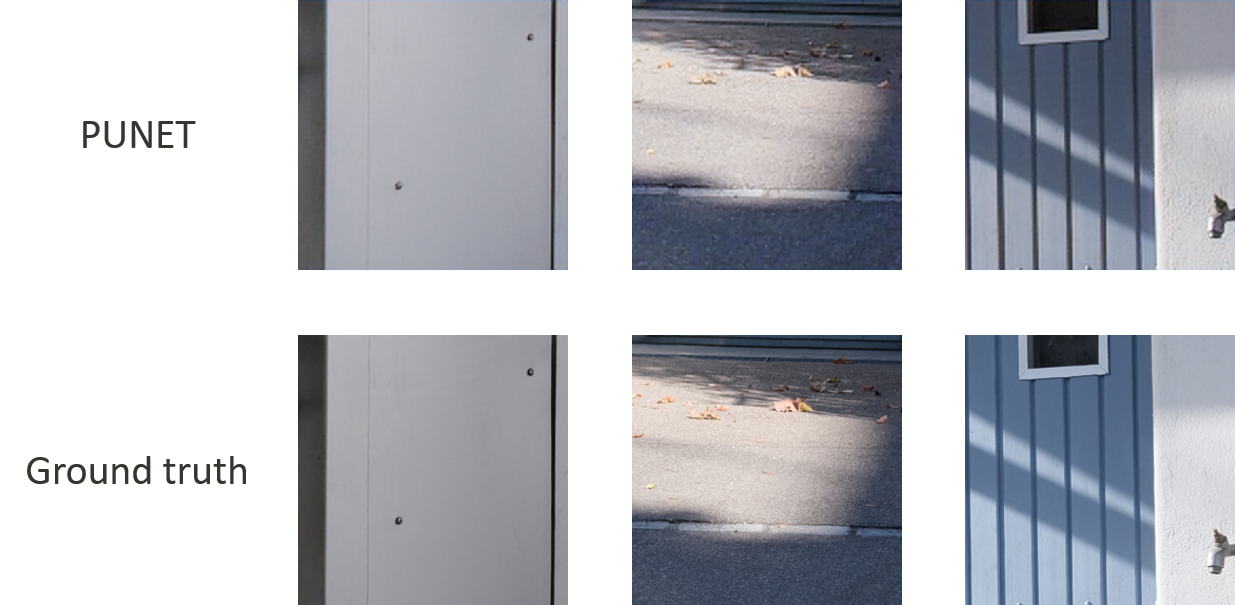Deep Learning for Smartphone ISP

Motivation
As the popularity of mobile photography is growing constantly, lots of efforts are being invested now into building complex hand-crafted camera ISP systems. Despite the advances in this field, the modern smartphone cameras are still unable to reach the level of the high-end DSLR cameras, partly because the conventional ISP algorithms are unable to accurately recover the information coming from the tiny mobile camera sensors or render the missing image details. To address this problem, we organize this challenge and present a large-scale dataset consisting of aligned smartphone raw / DSLR image pairs to train deep learning-based ISPs.
Challenges
The challenge aims to obtain an output image with the best trade-off between pixel fidelity (PSNR) and latency on mobile devices.
Our Approaches
The whole pipeline of Learned Smartphone ISP has two main steps (assume the input resolution is H x W):
- deBayer pre-processing:
- Input: RAW data [
H x W x 1] - Output: deBayer RAW data [
(H/2) x (W/2) x 4]
- Input: RAW data [
- We propose an UNet-like architecture, PUNET, to take deBayer data and output RGB images:
- Input: deBayer RAW data [
(H/2) x (W/2) x 4] - Output: RGB image [
H x W x 3]
- Input: deBayer RAW data [

A detailed description of the entire baseline training pipeline can be found in our GitHub: https://github.com/MediaTek-NeuroPilot/mai21-learned-smartphone-isp.
Dataset
(Will be released. Stay tuned.)
More information of the dataset can be found in our GitHub: https://github.com/MediaTek-NeuroPilot/mai21-learned-smartphone-isp.
Results
We evaluate the pre-trained PUNET on the validation data (resolution: 256x256), and obtain the following results:
Resources
Papers & Code


Other Links
- Mobile AI (MAI) Workshop @ CVPR 2021
- Learned Smartphone ISP Challenge @ MAI 2021
- MediaTek Blog [ Blog-1 ][ Blog-2 ]
- MediaTek Dimensity 1000+ APU
Related Publications
If you find this project useful, please cite our work:
- Andrey Ignatov, Cheng-Ming Chiang, Hsien-Kai Kuo, Anastasia Sycheva, Radu Timofte, Min-Hung Chen, Man-Yu Lee, Yu-Syuan Xu, Yu Tseng, et al. “Learned Smartphone ISP on Mobile NPUs with Deep Learning, Mobile AI 2021 Challenge: Report”, CVPR Workshop and Challenges on Mobile AI (MAI), 2021.
BibTex
@misc{mtk2021mai,
title={Mobile AI Workshop: Learned Smartphone ISP Challenge},
year={2021},
url={https://github.com/MediaTek-NeuroPilot/mai21-learned-smartphone-isp}
}
@inproceedings{ignatov2021learned,
title={Learned Smartphone ISP on Mobile NPUs with Deep Learning, Mobile AI 2021 Challenge: Report},
author={Ignatov, Andrey and Chiang, Cheng-Ming and Kuo, Hsien-Kai and Sycheva, Anastasia and Timofte, Radu and Chen, Min-Hung and Lee, Man-Yu and Xu, Yu-Syuan and Tseng, Yu and Xu, Shusong and Guo, Jin and Chen, Chao-Hung and Hsyu, Ming-Chun and Tsai, Wen-Chia and Chen, Chao-Wei and Malivenko, Grigory and Kwon, Minsu and Lee, Myungje and Yoo, Jaeyoon and Kang, Changbeom and Wang, Shinjo and Shaolong, Zheng and Dejun, Hao and Fen, Xie and Zhuang, Feng and Ma, Yipeng and Peng, Jingyang and Wang, Tao and Song, Fenglong and Hsu, Chih-Chung and Chen, Kwan-Lin and Wu, Mei-Hsuang and Chudasama, Vishal and Prajapati, Kalpesh and Patel, Heena and Sarvaiya, Anjali and Upla, Kishor and Raja, Kiran and Ramachandra, Raghavendra and Busch, Christoph and de Stoutz, Etienne},
booktitle={IEEE Conference on Computer Vision and Pattern Recognition (CVPR) Workshops (Mobile AI)},
year={2021},
url={https://arxiv.org/abs/2105.07809}
}
Members
1MediaTek Inc. 2ETH Zurich
 |  |  |  |  |  |  |  |  |
|---|


